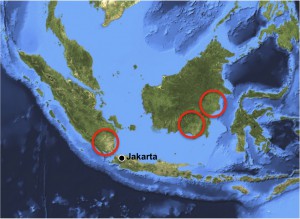The International Geological Congress (IGC) was held in Brisbane from 5 to 10 August and there were lots of sessions on coal and energy. The IGC is held every four years and takes the flavor of the city and host country. Without a doubt the mining culture of Australia permeated the congress with the end result of some of the best coal and petroleum presentations I’ve seen in a long while. I presented two papers:
Moore, T.A., Nas, C., “Update on the character, resource and activity of Indonesian coalbed methane”
and,
Moore, T.A., Moore, C.R. and Wang, X., “The CBM explorationist’s toolbox: Quick uncertainty characterization for GIP and gas flow”
There has only been a few papers published on Indonesian coalbed methane and thus the summary I gave used primary data collected while consulting. Because of the nature of the data, the exact locations are confidential. Nevertheless I discussed how there are essentially three primary target basins, two in Kalimantan (the Barito and the Kutai) and one on Sumatra (South Sumatra). Stratigraphically, all CBM potential is contained within Tertiary age seams. Gas contents vary from less than 1 to over 13 m3/ton. Gas saturations are generally good, especially below 400 m; permeability data is less abundant and reliable but in general is encouraging.
The uncertainty characterization talk focused on how to get quick, and relatively reliable, estimates for gas in-place (GIP) and gas flow that is commiserate with the level of knowledge of an area. In most green field CBM exploration permits there is very little knowledge of the amount of gas and/or how quickly over time that gas can be produced. Thus, a statistically valid method of identifying and communicating the level of uncertainty is crucial in the commercial assessment of these deposits. The method of assessment for GIP has previously been published in Moore et al. (2009) and Moore and Friederich (2010) (and I can pass these on to any interested party).
- Major coalbed methane basins in Indonesia




Comments are closed.